

Imaging/Video by Abigail Winn
Words by Morgan Krakow
Cool water glides against silky mud. It is not the painful shock of an ocean current, nor the warm, sunbathed waters of a summer river. Instead, a tolerable cold, refreshing and brisk. The water - neither salty and clear, nor fresh and flowing - runs in channels at shallow depths. A brackish, brown wetland connects ocean and river. Overlooked and overshadowed by the drama of a Pacific wave and the enticing recreation of a Northwest River, the estuary sits in between.
But this middle ground is no static place. Rather, the dynamic mixing of ocean and river creates an ecosystem that is vital for biological well-being along the coast. Humans, animals and plants alike all hold important ties to this place.
Along Coos Bay sits the South Slough National Estuarine Research Reserve – the first of its kind. It connects the Pacific Ocean to a network of creeks and streams further inland. It is always changing, tides rushing in and out beneath the surface, bearing mudflats and salt marshes at Low Tide, sliding upwards to cover eelgrass beds at High Tide.
Estuaries play a variety of important roles for the communities that live in and around them. For salmon, an anadromous fish, the estuaries are where they must acclimate to the salty ocean water before heading out into the Pacific. The adolescent fish spend time in estuaries to start getting ready for their sea journeys. For Dungeness crab, juveniles can grow here without the threat of oceanic predators. For humans, besides the inherent beauty of a submerged grassland, salt marshes act in a sponge-like manner, soaking up floodwaters before they reach homes and backyards.
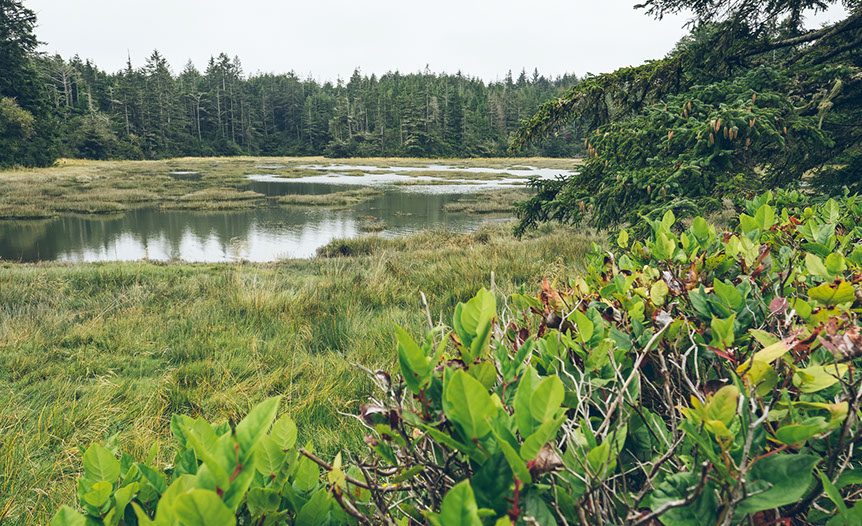
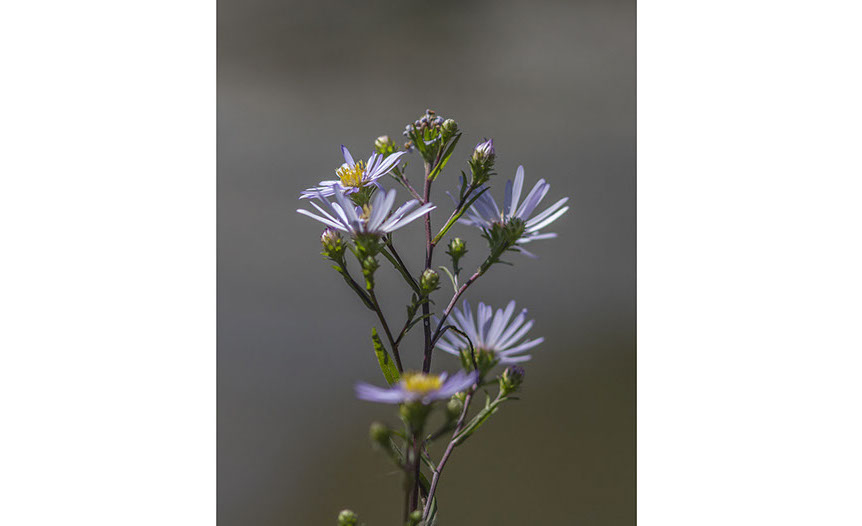
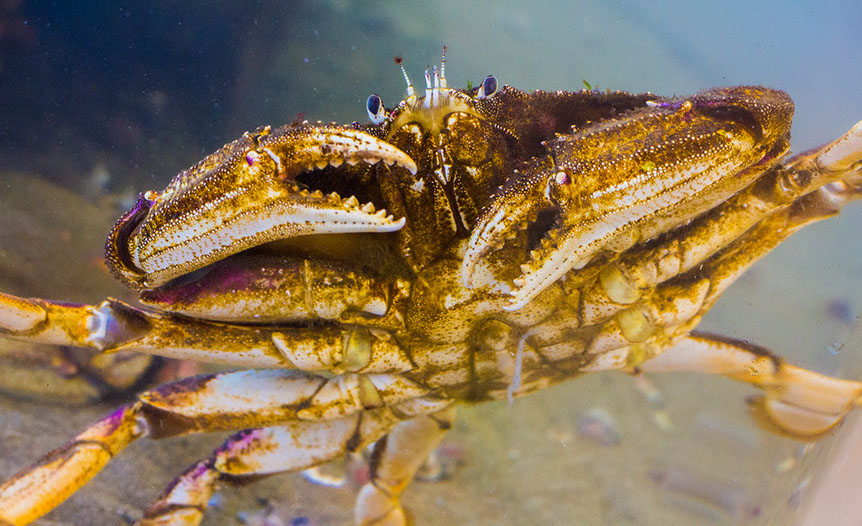
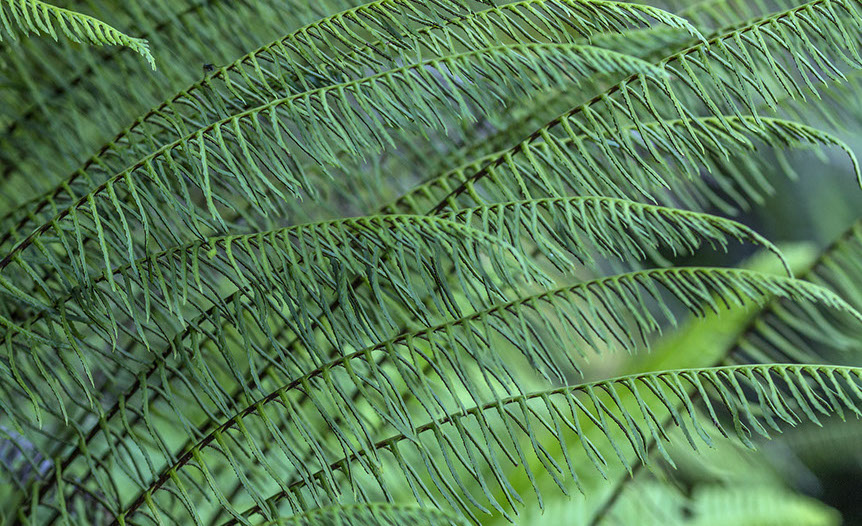
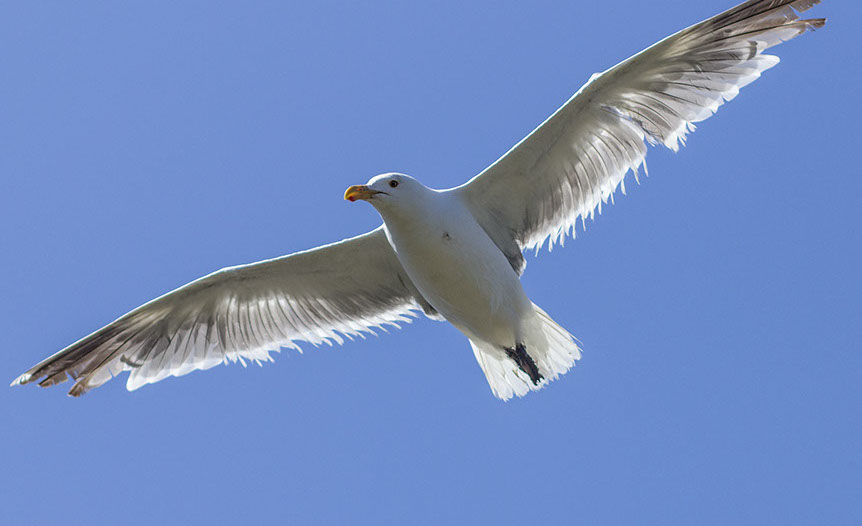
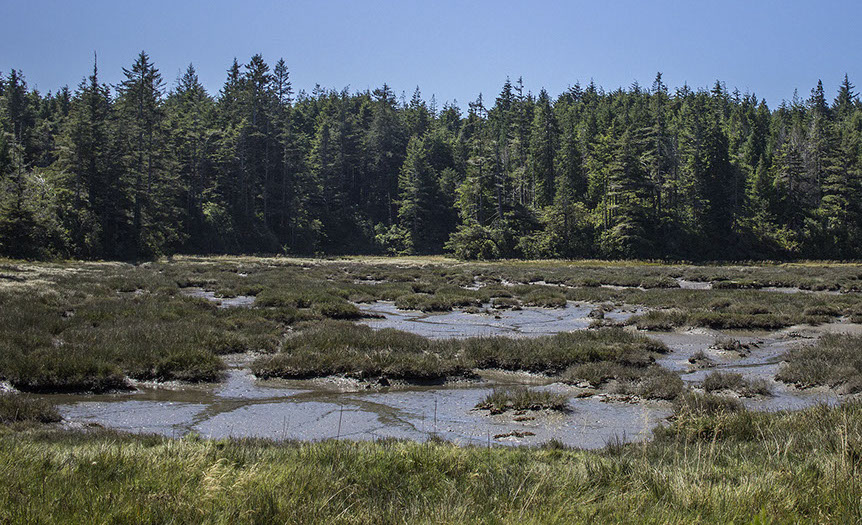
The estuary during high tide. The majority of the land is covered in water, providing passage and protection to the creatures living in the environment. Photo by Jeff Dean
Crooked stem asters (Symphyotrichum prenanthoides) are one of several flower species found on the reserve. Typically found in the eastern United States, they grow best in loamy soils in forest edge or riparian habitats. Photo by Abigail Winn
A Dungeness crab (Metacarcinus magister) looks out from its enclosure at the Charleston Marine Life Center. The species is important to the recycling of life in the tidal and estuarine ecosystems, feeding off of decaying plants and animals. Photo by Andrew Afranji
Deer fern (Blechnum spicant) leans toward the path in the estuary reserve. It prefers moist, acidic soils and is found from Alaska to California. The source of its name can be traced back to two ideas: first, deer and elk often browse the ferns, local native Americans believe the fern has medicinal properties. In the past, people observed deer rubbing their heads against the ferns after losing their antlers. Photo by Abigail Winn
A glaucous-winged gull (Larus glaucescens) flies overhead. According to the Audubon Society, this species is endangered by climate change. Research points to future changing migratory habits due to temperature changes. Photo by Abigail Winn
The estuary during low tide at the South Slough Estuarine Reserve outside Charleston, Oregon. Tidal flats emerge, exposing the fine silt loam and he organisms that live in it to the air. Gulls often land to feed during low tide. Photo by Abigail Winn
<
>
